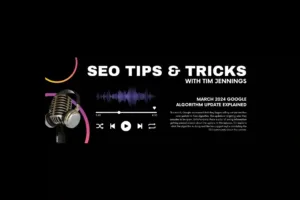What's Your Story?
Success in marketing hinges on your ability to communicate to your customers that you understand their needs, care about them as people, and will solve their problems.
You have to take the customer on a journey to show them how what you offer will provide for them the most effective solution out there — and the way to do that is by using your website, social media pages, copy, advertisements to share your story. You might be thinking,
Easier said than done!
And you’re not wrong. Storytelling is hard, but it’s also what allows certain brands to excel while others — sometimes with equally good products or services — languish.
Let’s learn how to become storytellers.
What is a Story?
A story has three parts: setting, character, and the plot. Let’s define them.
1. Setting: Time & place
This is probably the easiest. When are you selling and where are you selling? Probably, now and online (and possibly other physical locations too). Next!
2. Character: The people
Now it’s getting more interesting. Your company is one character, and your customer is another. Think of your company as a supporting character, and your customer as the protagonist – that’s right, they are the heroes!
3. Plot: What happens in the story
When you were in English class as a teenager, you probably saw a plot diagram that looked something like this:

Here’s what’s happening, according to the terms:
▶ Exposition: a character is introduced
▶ Rising action: a problem is introduced
▶ Climax: everything gets worse; the character makes a decision
▶ Falling Action: things slowly improve
▶ Dénouement: a fancy French word that means everything comes to a gentle close
Writing Your Company's Story
Good news: The plot diagram works just as well for your company’s story as it does for English class!
Here’s what’s happening for your company’s story:

▶ Exposition: a person in your setting with a problem is introduced
▶ Rising action: the person researches companies to solve it
▶ Climax: they become a customer by choosing your company
▶ Falling Action: your company helps the customer find a solution
▶Dénouement: a satisfied customer refers friends, and returns
Get Specific With Your Story
To pitch that story in a compelling way, you’ve got to get specific. For example, I’m not interested in reading a story about a short hairy guy and his ring. However, if you tell me that:
A hobbit named Frodo has come into possession of a magical ring that grants immortality but also corrupts anyone who wears it and that he must go on a perilous journey through a dangerous land with his misfit friends under the guidance of a wizard to destroy the ring and that on that quest he must battle against the forces of evil itself…
— well, I’m interested… and you might have created a franchise worth $6 billion.
Specificity matters.
Define the Problem
Your company doesn’t have to save the world as we know it — but it should have a specific story that gives customers a chance to envision how working with you will make them a hero. And to do that, you’ve got to start with the problem that you solve.
So, what problem does your company solve?
Three things to remember:
▶ The subject of the problem is an ideal customer.
▶ The problem shouldn’t have a company’s name in it. You don’t create the problem — you solve it!
▶ Be specific! Don’t say people need sneakers or I sell running shoes. Instead, say: runners suffer from foot pain needlessly
Create the Problem
Now that we have a problem, we can work backwards and create an ideal customer who has this problem:
Julie, a runner from Phoenix, Arizona, has had to stop running because her shoes don’t offer her the kind of arch support that she needs.

Look back at the plot diagram. We’ve created an exposition.
Now, we’re moving into the rising action.
Julie researches solutions to poor arch support. She looks online, tries on some shoes in different stores, and then, one day, stumbles upon your website…
And now it’s decision time: the climax.
The information Julie finds on the website interests her. She gets to the bottom of the page where she is greeted with a call to action: Purchase Today. It’s her decision point, and the climax of the story! Of course, Julie purchases.
In the falling action, Julie enjoys the shoes and you provide great customer service.
Julie, a returning customer, tells her friends about your great company that solved her foot pain and is responsible for her success in the most recent 10K. This is the dénouement.
Share the Solution
Like the problem, the solution also doesn’t include the company’s name.
The solution shows the before and after interaction — the transformation that happened before a customer knew you existed and after they’ve purchased from you.
Julie couldn’t run because of poor arch support, but now she is able to run every day.
This solution begs the question: How did that happen? The answer to the question of how the transformation happened is:
Your company listened to her concerns and sold her a pair of shoes that uniquely fit her needs.
How Story Telling Sells
Every story ends with this idea: Our company can do the same thing for you.
You can share statistics all day, and you might get my attention. However, if you tell me about a customer whom you specifically helped — and finish the story by saying that you can do the same for me, then
I will recognize that you help people, and I will trust you.
When you tell a story about your brand and invite your customers to imagine how working with your company will help them solve a problem, you show that you’re about helping other people — and you’ve transformed yourself from a marketer to a
STORYTELLER.
Company Storytelling Cheat Sheet
1.What problem does your company solve?
2.What solution does your company provide?
3. What is unique about your solution that makes people want to purchase from you?
4.What does your ideal customer tell other people about your company?
5.Personalize each of these plot components for your company (think about the story with Julie).

Fill out the form below to download this blog post in a free short PDF guide!
Interested in how Soulheart can help tell your company’s story? Schedule a free marketing consultation today!






